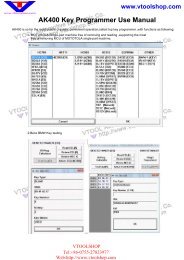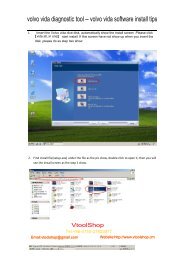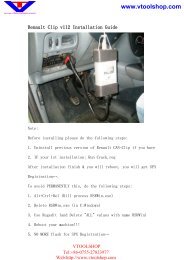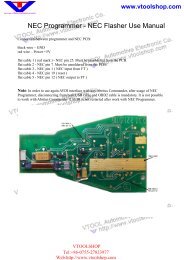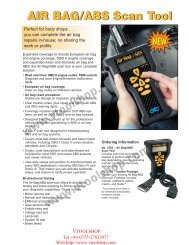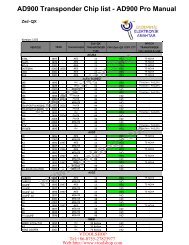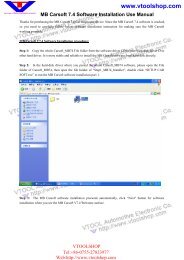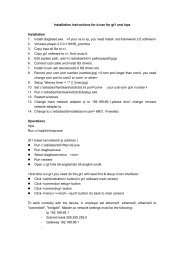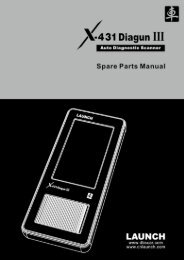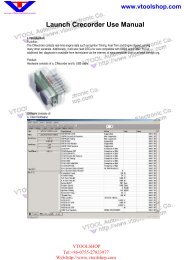GS400 OBDII Scan Tool Manual.pdf - Car diagnostic tool
GS400 OBDII Scan Tool Manual.pdf - Car diagnostic tool
GS400 OBDII Scan Tool Manual.pdf - Car diagnostic tool
You also want an ePaper? Increase the reach of your titles
YUMPU automatically turns print PDFs into web optimized ePapers that Google loves.
2. General Information<br />
2.1 On-Board Diagnostics (OBD) II<br />
The first generation of On-Board Diagnostics (called OBD I) was<br />
developed by the California Air Resources Board (ARB) and<br />
implemented in 1988 to monitor some of the emission control<br />
components on vehicles. As technology evolved and the desire to<br />
improve the On-Board Diagnostic system increased, a new generation of<br />
On-Board Diagnostic system was developed. This second generation of<br />
On-Board Diagnostic regulations is called "OBD II".<br />
The OBD II system is designed to monitor emission control systems and<br />
key engine components by performing either continuous or periodic<br />
tests of specific components and vehicle conditions. When a problem is<br />
detected, the OBD II system turns on a warning lamp (MIL) on the<br />
vehicle instrument panel to alert the driver typically by the phrase of<br />
“Check Engine” or “Service Engine Soon”. The system will also store<br />
important information about the detected malfunction so that a<br />
technician can accurately find and fix the problem. Here below follow<br />
three pieces of such valuable information:<br />
1) Whether the Malfunction Indicator Light (MIL) is commanded<br />
'on' or 'off';<br />
2) Which, if any, Diagnostic Trouble Codes (DTCs) are stored;<br />
3) Readiness Monitor status.<br />
2.2 Diagnostic Trouble Codes (DTCs)<br />
www.v<strong>tool</strong>shop.com<br />
OBD II Diagnostic Trouble Codes are codes that are stored by the onboard<br />
computer <strong>diagnostic</strong> system in response to a problem found in the<br />
vehicle. These codes identify a particular problem area and are intended<br />
to provide you with a guide as to where a fault might be occurring<br />
within a vehicle. OBD II Diagnostic Trouble Codes consist of a fivedigit<br />
alphanumeric code. The first character, a letter, identifies which<br />
control system sets the code. The other four characters, all numbers,<br />
provide additional information on where the DTC originated and the<br />
operating conditions that caused it to set. Here below is an example to<br />
illustrate the structure of the digits:<br />
VTOOLSHOP<br />
Tel:+86-0755-27823977<br />
3<br />
Web:http://www.v<strong>tool</strong>shop.com



